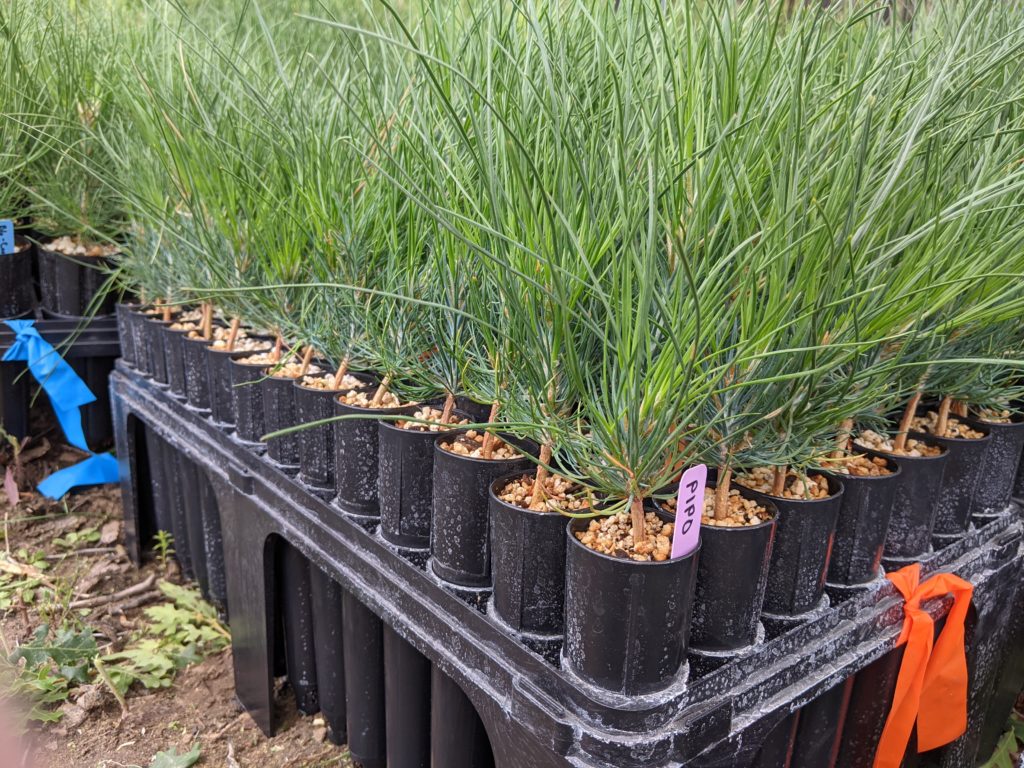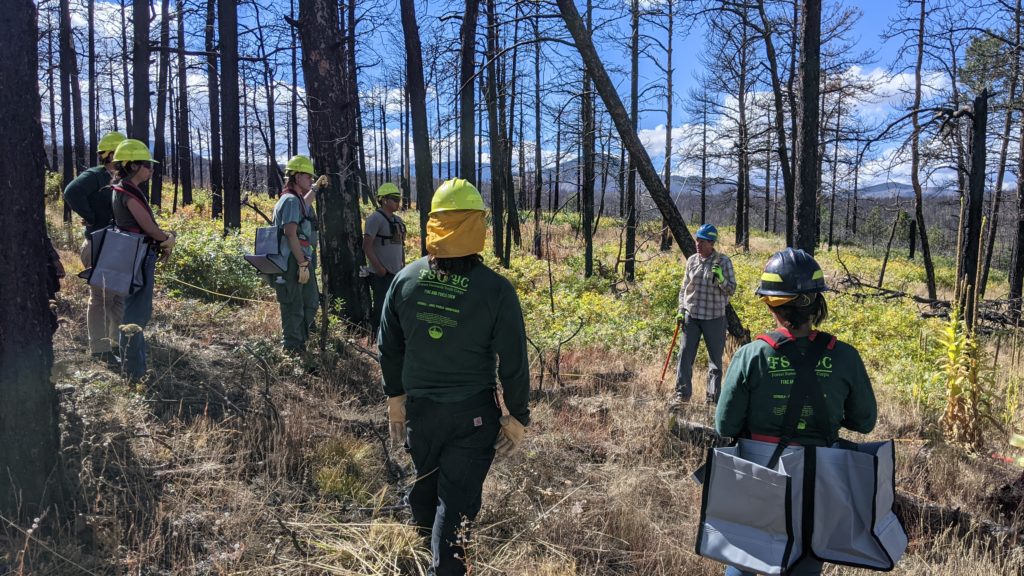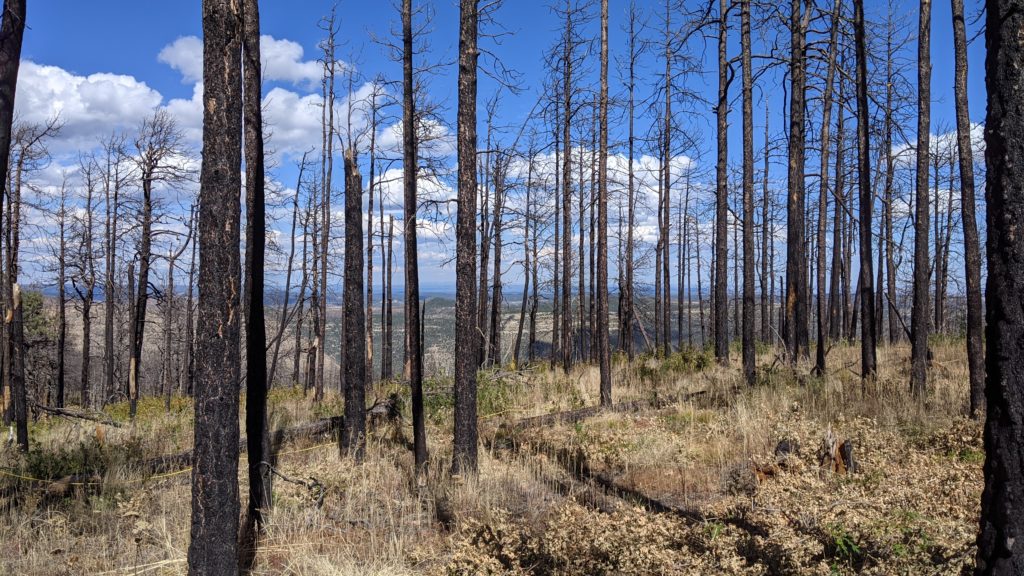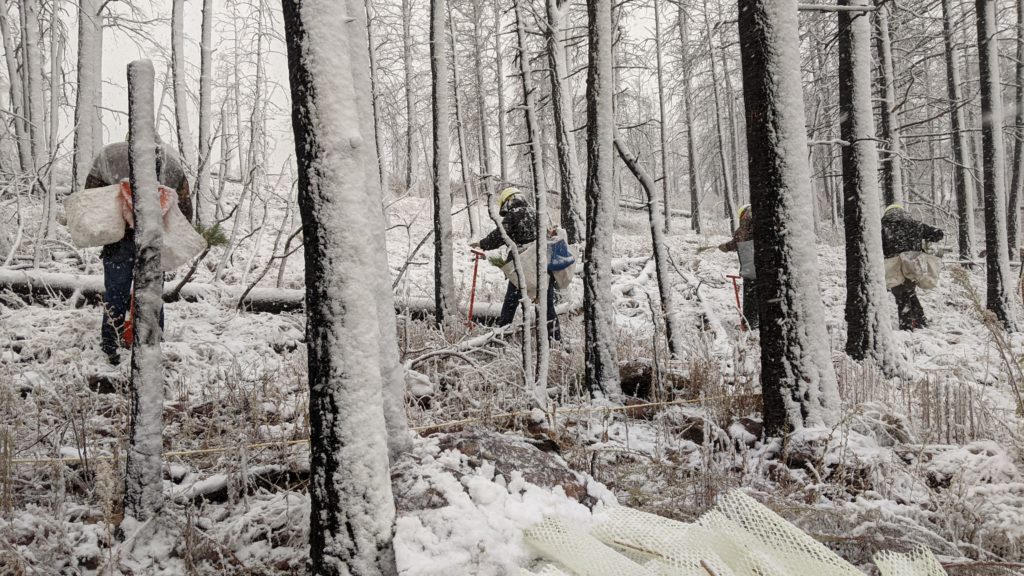Future stewards planting future forests
Written by Liz Bailey
An ambitious project requires an ambitious crew to carry out the work. Fortunately, when researchers from New Mexico State University (NMSU) recruited the Forest Stewards Youth Corps (FSYC) to plant over 8,000 trees as part of a landscape-scale reforestation research experiment this fall, they were able to overcome challenging conditions to get the job done.
If you’ve heard of reforestation efforts in the Southwest recently, it is likely that Owen Burney and the John T. Harrington Forestry Research Center (FRC) played a role in those projects. In addition to their many research projects, the FRC is the largest forestry seedling producer in the Southwest and provides trees for reforestation efforts across the Southwest and Intermountain West. For landscapes that have experienced catastrophic fire that left few or no remaining trees to produce seed, planting site-adapted trees can facilitate the regeneration of forested lands. Growing and outplanting tree seedlings remains an under-utilized practice and further research is needed to determine what techniques, conditions, and methods produce the highest rates of survival and propagation.
 The Centers of Research Excellence in Science and Technology (CREST) project is a large, multi-institution collaboration conducting research to examine restoration of Southwestern forests in the context of changes in forest structure and composition. One part of the project consists of three separate experiments each testing variables related to regeneration of post-wildfire forests. The variables tested in these three experiments include: size and density of applied nucleation (strategically planted “islands” that spread outward over time), vegetation treatments (full mechanical reduction, partial mechanical reduction, no reduction), container size, season of planting, and protection from herbivory (fencing and shelters). The results from this research will inform land managers on factors that influence regeneration of forests post-wildfire and the best methods for carrying out plantings.
The Centers of Research Excellence in Science and Technology (CREST) project is a large, multi-institution collaboration conducting research to examine restoration of Southwestern forests in the context of changes in forest structure and composition. One part of the project consists of three separate experiments each testing variables related to regeneration of post-wildfire forests. The variables tested in these three experiments include: size and density of applied nucleation (strategically planted “islands” that spread outward over time), vegetation treatments (full mechanical reduction, partial mechanical reduction, no reduction), container size, season of planting, and protection from herbivory (fencing and shelters). The results from this research will inform land managers on factors that influence regeneration of forests post-wildfire and the best methods for carrying out plantings.
 This fall, in the first two weeks of October, six-month old ponderosa pine (Pinus ponderosa) seedlings were planted in the burn scar of the Ute Park Fire (2018) on the Philmont Scout Ranch just outside of Cimmaron, New Mexico. Trees were planted in a grid within nucleation patterns of varying sizes and densities and each plant was sheltered to prevent herbivory. These plantings were completed by The Forest Stewards Guild’s three FSYC crews which operate out of the Jemez, Mountainair, and Espanola Forest Service Ranger Districts. Individuals on these crews are 18-25 years old with an interest in careers in forestry, fire, natural resources, ecology, or related fields.
This fall, in the first two weeks of October, six-month old ponderosa pine (Pinus ponderosa) seedlings were planted in the burn scar of the Ute Park Fire (2018) on the Philmont Scout Ranch just outside of Cimmaron, New Mexico. Trees were planted in a grid within nucleation patterns of varying sizes and densities and each plant was sheltered to prevent herbivory. These plantings were completed by The Forest Stewards Guild’s three FSYC crews which operate out of the Jemez, Mountainair, and Espanola Forest Service Ranger Districts. Individuals on these crews are 18-25 years old with an interest in careers in forestry, fire, natural resources, ecology, or related fields.

This project pushed these crew members outside of their comfort zone. There were days of intense wind which resulted in sleepless nights, broken tents, and conditions that prohibited planting. When the wind died down, crews worked through the first major snowfall of the season in cold and wet conditions. Camping for ten days straight presents a lot of challenges, particularly for our crew members who had little or no previous camping experience. There were times when morale was low and there was uncertainty as to whether we could get the work done in time, but our crews leaned on each other for support and worked hard until the very last tree was planted.
Being stewards of the land sometimes means braving harsh conditions to protect and improve our forests. This experience not only provided new learning opportunities and skills development for our crew members but fostered a new type of relationship with the land: playing an active role in restoring a landscape that would otherwise be unable to naturally recover from disturbance. Some day these crew members may return to this site, maybe with their own children, and find a forest that they themselves helped grow.
